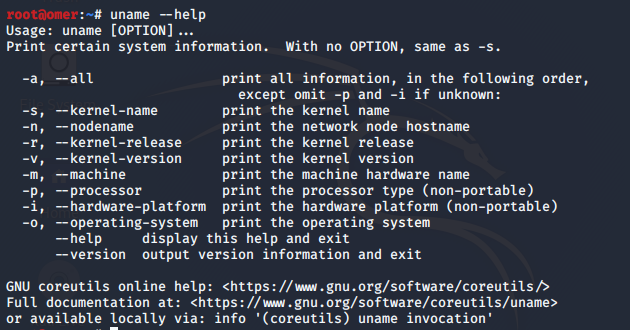We will explain the “uname” command that you can use on your Linux operating system. With this command, you can get the kernel information and processor information of the system you are using.
uname
The uname command is one of the commands you can use about your system. First, let’s view help information and see options.
uname --help

If you give the uname command without any options, the -s option is used by default.
uname -a, uname –all
All the information that can be printed is printed on the screen.

uname -s, uname –kernel-name
Prints the kernel name in use on the screen.

uname -n, uname –nodename
It shows the hostname of your computer used in the network.

uname -r, uname –kernel-release
The Kernel that I use shows the main distribution information.

uname -v, uname –kernel-version
It shows the distribution-specific version information of the Kernel version in use, together with the date of its publication.

uname -m, uname –machine
Shows the hardware name of the computer you are using.

uname -p, uname –processor
Shows the architectural information of the processor used.

uname -i, uname –hardware-platform
Shows the hardware platform information of the computer used.

uname -o, uname –operation-system
Shows what the operating system is.

uname –version
Shows version information.





